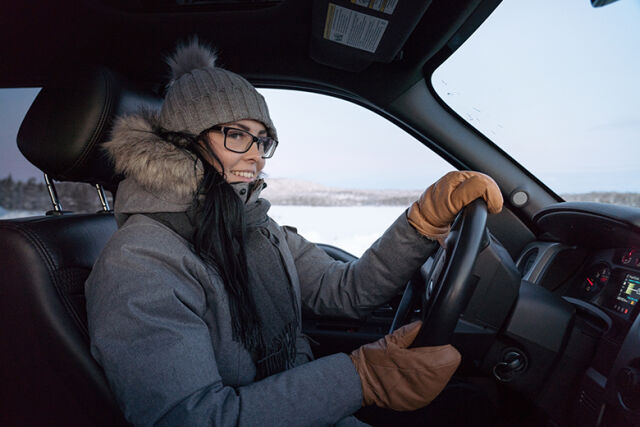Wed February 19 10:51 am 2020 in categories Product news, Company news
Nokian Tyres survey: European drivers are afraid of speeding and snowy slippery roads

Nearly half of European drivers believe that the main risk associated with driving a car in winter is speeding. In second place, most drivers indicated snow-covered, slippery roads as a threat. When asked about the possibilities of improving safety in winter, the most common answer was to use specialized winter tires. The survey was conducted in five countries: Germany, France, Italy, Poland and the Czech Republic.
According to the survey by Nokian Tyres[1], the perception of the highest risk on the roads in the winter time was related to speeding rather than to poor road conditions, challenging weather or poor visibility due to atmospheric conditions or the fact that in winter it’s getting darker much earlier than in other seasons of the year.
The danger related to excessive speed was especially emphasized by Poles and Germans (57% and 56% of respondents, respectively). It was also the main risk factor in the winter period for Czechs (52%) and Italians (43%). Only French drivers pointed out that snowy slippery roads were the most important risk factor for them (45%), with only 32% of respondents claiming speeding was the most dangerous behavior on the road. In other surveyed countries, icy roads were mentioned as the second most important threat (with the exception of Germany). In general, the third most important risk factor identified by European drivers was the lack of sufficient distance from the vehicle in front. It is worth noting that this problem was mainly pointed out by Germans (by as many as 50%, compared to 25% to 33% in the other countries).
Specialized winter tires matter
On average, only 29% of respondents indicated the use of worn tires as a danger on the road, which resulted in a low, 8th position among the risk factors. At the same time, when asked about the possibilities of improving safety in winter, drivers most often indicated the use of specialized winter tires (nearly 2/3; with nearly 80% in Italy). The second best way to improve safety was to check the tire tread depth, while the third most important step was to maintain the condition of the car braking system.
The study has shown a slightly contradicting result. On one hand the respondents don´t consider the use of worn tires as a big risk factor in winter. On the other hand they see a potential in improving road safety by using specialized winter tires and keeping the sufficient tread depth.
“Tires are the only points of contact of the car with the road, and their condition is critical when it comes to traffic safety like braking on snowy road or making sudden lane change on slushy asphalt. Using worn tires will extend the car’s braking distance and make it more difficult to handle, especially under slippery conditions. Moreover, the tires are not able to clear the snow and slush from underneath them, and that causes the feel for the road to disappear,” says Martin Dražík, Product Manager of Nokian Tyres Europe.
It is worth noting that few drivers see the need to use snow chains on winter roads. Only 14% of European drivers indicated that snow chains were a factor improving safety. This is probably due to the fact that they are only necessary on really steep uphill stretches, e.g. in the mountains. This largely explains why this equipment is important for nearly a quarter of the French and a slightly lower percentage of Italians.
When to change tires
Nokian Tyres is a world-famous producer of premium winter tires. It invented the world's first winter tires more than 80 years ago. There is a lot of confusion as to when you actually need to buy new winter tires. The legal minimum tread depth for winter tires in most European countries is 3 mm.
All winter tires from Nokian Tyres have the patented DSI (Driving Safety Indicator) and the snowflake symbol (Winter Safety Indicator) that will quickly and easily show how worn your tires are. The numbers on the tread indicate the remaining tread depth. The snowflake symbol remains visible until the groove depth is four millimeters, which is the required groove depth for safe winter driving. Once the snowflake symbol wears off, the driver should buy new winter tires to ensure adequate safety.
Further information:
Jaroslav Nálevka, PR Manager McCann Prague, 00420 725 865 874,
[email protected]
Zuzana Seidl, PR Manager Nokian Tyres CE, 00420 603 578 866,
[email protected]
[1] The data is based on a Nokian Tyres online survey conducted by the YouGov research company from December 2018 to January 2019. The winter tire survey was conducted in five countries (Germany, France, Italy, Poland and the Czech Republic), with a sample ranging from 500 to more than 2,000 respondents from each country.